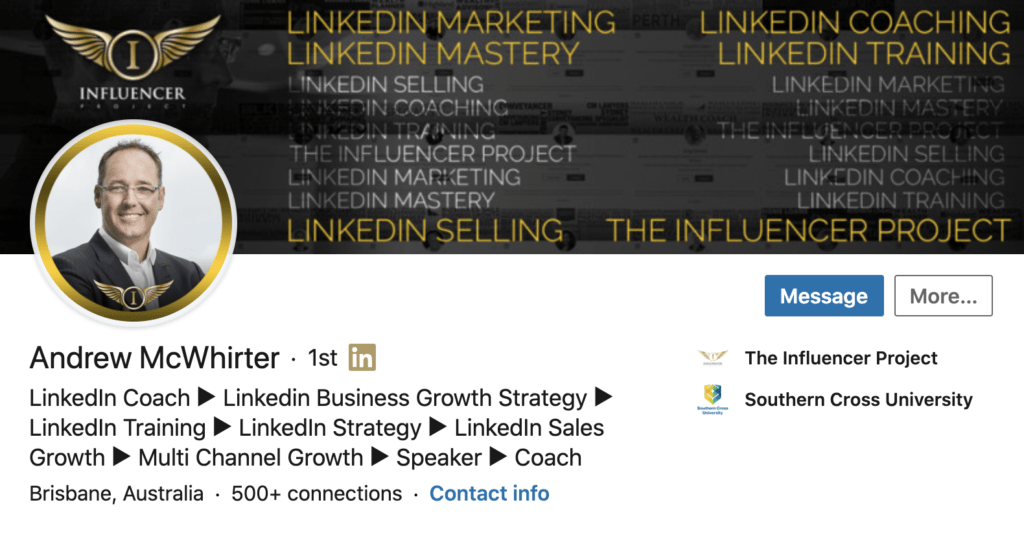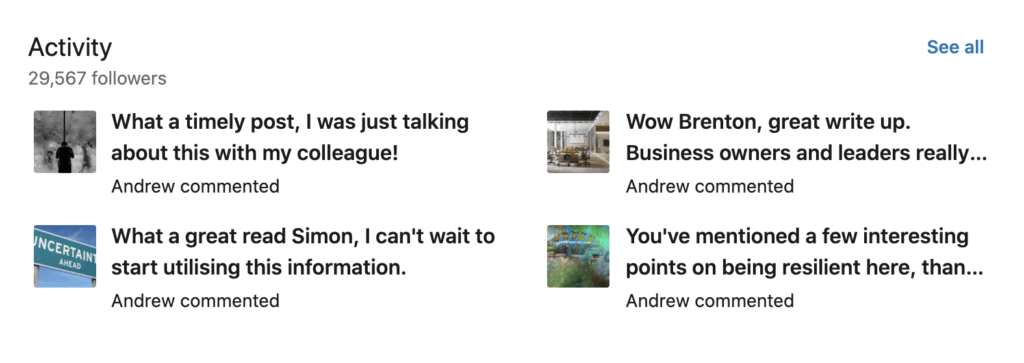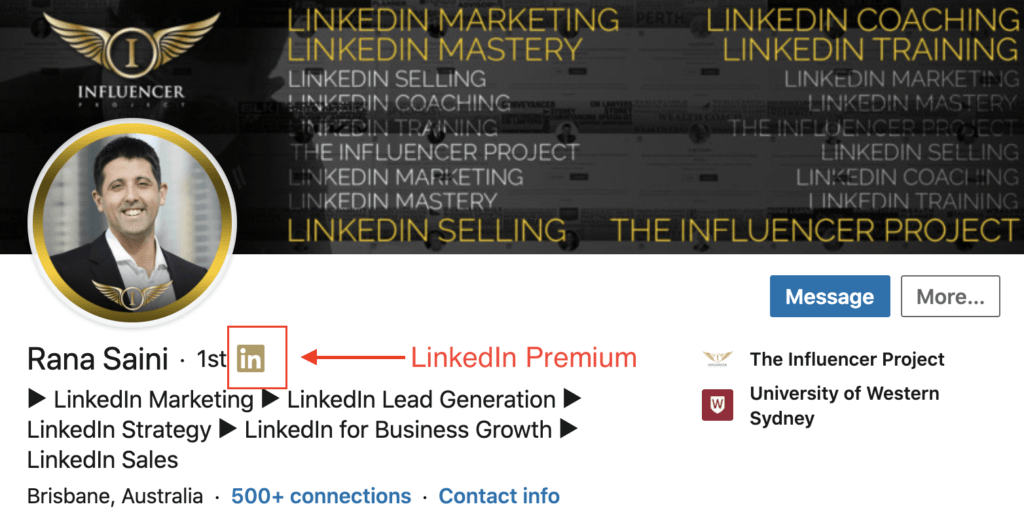[Advertisment] Be honest – this is what you expected when you signed up for the LinkedIn party:

Not generating the leads you’d hoped for? It probably feels more like this…

If the music’s stopped, it might be that you are making some simple mistakes with your strategy on LinkedIn.
This is not about singling you out and pointing fingers: MOST professionals on LinkedIn are making at least one of the following ten errors – and most are making more.
If you want to get more leads, put your hand on your heart and ask yourself which of the following you are you currently guilty of:
1. Putting a picture of your dog as the background image on your profile
You laugh but I’ve seen quite a few professionals put pictures of their pets as their background image. This is one of the most important spaces on their entire professional online setup.
This image is your ideal opportunity to tell someone instantly what you do. Not just anyone – a potential audience of 500 million other professionals on LinkedIn.
That’s a pretty powerful piece of online real estate. Get a professional background image made by a freelance designer and include your keywords to show anyone who lands on your profile exactly what you do immediately:

2. Telling people WHO you are – not WHAT you do – on your profile?
The amount of profiles I read that tell me who the person is (their job title or position) rather than what they do is amazing.
Nobody ever wakes up in the morning and thinks “I need an MD today”.
You should talk to the needs of your target audience on LinkedIn. Tell them what you do in your professional headline and use your keywords in the process to improve searchability – just like my LinkedIn profile featured above.
Dreaming of building a highly-profitable consulting business? Don’t miss this 10-day B2B Growth Challenge!
3. Reacting to connection requests to build your network
Are you hunting for and connecting with new people every single week on LinkedIn? Or do you expect to grow your network by waiting for potential connections to find your profile, read it, fall in love with it, and send you a connection request?
Just like all the things worthwhile on LinkedIn, the onus is on you to do the work.
Once you’ve defined your target audience, try to grow your connections by 50-75 people per week and pretty soon you’ll have a sizable network. All the tools are there on LinkedIn to search for and connect with professionals in your target market.
4. Sending the same messages to everyone in your network
Trying to communicate with your network on LinkedIn with a single automated ‘voice’ is impossible.
LinkedIn is not made that way. You should be personalising all interactions with your network – from the connection request onwards.
While this takes a little more time, it is a LOT more effective.
Set up some templates that can help you design suitable messages according to who you’re talking to: make a series of connection request templates, status update templates, offer templates, and so on…
***************************************************************************************
Hi Peter,
I was checking out your profile and noticed that you play in the <name of industry> game. I have a genuine interest in this area of business and it would appear that you have a wealth of experience. Although I know we’ve never met, I hope you don’t mind me reaching out with a connection request.
Kind regards
Andrew
***************************************************************************************
Hi all. Thought you might be interested in this article. I am sure that many of you will relate to the content and get something useful out of it. I have included a few of the highlights here… what’s your take on the subject?
***************************************************************************************
Hi. This is one of the best articles I’ve read in a long time on the subject of {insert subject}. I’ve included a few snippets below. Do you agree?
***************************************************************************************
5. Logging in once a week
A high percentage of business owners on LinkedIn log in to their account for an hour on a Saturday morning, reply to a few messages, and then log out again.
This is a reactive approach to LinkedIn and it won’t yield much in the way of leads.
You need to get active and show consistently that you are open for business and interested in communicating with your network.
6. Rarely liking, commenting, endorsing, or sharing
If you are only logging in now and again, then you’re not liking, commenting on, or sharing other people’s content in your network; and you’re not endorsing them for skills.
This is a hugely important part of your activity because every time you take such an action you appear in the feeds of your connections. Make sure you do this consistently every working day of the week for 30-45 minutes. This acts as a reminder of who you are and what you do.
Later, when you approach your connections with offers, you will not appear from nowhere like a ‘cold’ call; they will already be familiar with who you are. This is very important groundwork in the relationship-building process.

7. Rarely updating your status
Another important part of your activity on LinkedIn is your own status updates.
Sometimes, professionals don’t post because they do not know what to post about. They run out of ideas. But that’s a cop out.
The key to status updates is to mix it up and give more than you take. Focus posts around the following mix of content:
- Personal philosophy posts
- Personal experiences
- Personal lifestyle stories
- Proof of results in your business
- FAQs
- Instructions on taking the next step

8. Trying to be interesting – rather than interested
If you try to ‘wow’ your audience with amazing stuff about you and your business, you will drive them away.
A good guideline is to be 80% interested and 20% interesting.
Focus your interactions on your connections rather than you: be inquisitive, ask questions, delve, find out what their problems and needs are. This should be relatively easy as people love to talk about themselves!
Where you can help, offer it – but not in a salesy way. Simply try to build the relationship by listening and offering advice, if you are qualified to do so.
9. Selling!
LinkedIn is no place for selling. Yes, you read that right.
It’s a fabulous place for marketing but a lousy one for selling. Where else can you can research a database of 500 million professionals, connect with them, interact and engage with them, build the relationship, and demonstrate your expertise?
But the place for selling is offline – over the phone or face to face. That’s where you need to take the relationship after you have established that there is an opportunity.
10. Getting by with a freemium account

Don’t be tempted to stay with a freemium account. It will limit the activity that you can take – and that will limit your network growth and leads.
With a freemium account, around 80 activities per month are permitted before restrictions are applied. With 20 working days per month, that’s only four activities per day: nowhere near enough to connect with a decent-sized network.
Get a paid Business Plus account for $50 or $60 a month and this will allow you to really get active, engage with your network, and relationship-build.
So how many got you nodding? If it was only one, you’re not doing too badly…but for many readers there will be a few. Reverse these mistakes and the music will start again at your LinkedIn party.
P.s. Join us inside our pitch-free private training. We’ll show you how we built our business (from scratch) using 2 LinkedIn profiles to hit $84,000 a month within 4 months using a simple 3 step strategy. Click Here
